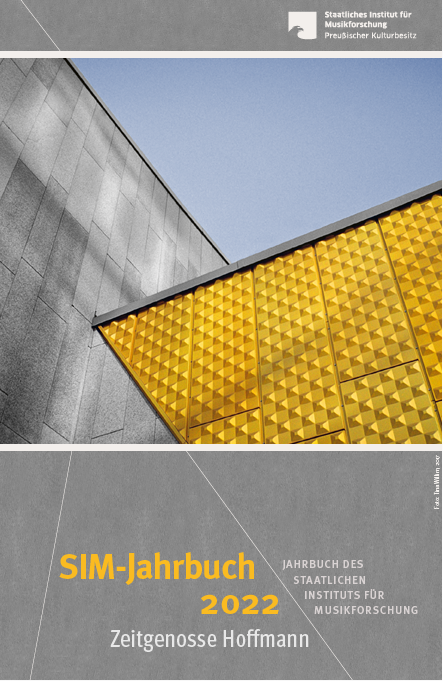Im Klangkosmos des Elektromagnetismus
Verschaltungen von Sound Art und Automation in Takis’ »Sculptures Musicales«
DOI:
https://doi.org/10.71046/simjb.2022.34Schlagworte:
Sound Art, kinetische Kunst, Musikelektronik, Automation, MedienarchäologieAbstract
Im Klangkosmos des Elektromagnetismus. Verschaltungen von Sound Art und Automation in Takis’ »Sculptures Musicales«
Mitte des 20. Jahrhunderts kommen im Kontext der kinetischen Kunst vermehrt elektrifizierte Klangobjekte auf, die als prototypische Sound Art auch die medientechnischen Bedingungen von Musik und Klang verhandeln. Exemplarisch zeigt sich dies an den Sculptures Musicales des griechischen Künstlers Takis (1925–2019), die auf Grundlage elektromagnetischer Schaltelemente selbstreguliert Klänge erzeugen. Während die konzeptionelle Rahmung der Sound-Skulpturen auf antike Vorstellungen der Sphärenharmonie rekurriert, basieren sie in ihrer baulichen Ausführung auf obsoleter Elektrotechnik. Ihr Material stammt von Flohmärkten und Schrottplätzen, aus alten Radios und Militärgerätschaften, deren Komponenten demontiert und rekontextualisiert werden. Indem der Beitrag dieses materiell-diskursive Spannungsfeld bis in die Schaltkreise hinein nachzeichnet, fragt er, was derartige Objekte über automatisierte Klänge Mitte des 20. Jahrhunderts zu wissen geben: Zum einen unterlaufen Implementierungen überholter elektrischer Schaltelemente und Praktiken der Bricolage Strategien automatischer Klanggenerierung durch nicht gänzlich determinierbare Operativität. Zum anderen folgt daraus, dass das zu Gehör Gebrachte ein widerständiges Potential birgt, indem es für medientechnologisch veränderte, elektromagnetisch codierte Umwelten sensibilisiert und kybernetisch gefärbte Vorstellungen der Automatisierung irritiert.
In the Sound Cosmos of Electromagnetism. Interconnections of Sound Art and Automation in Takis’ ›Sculptures Musicales‹
In the mid-20th century, electrified sound objects increasingly emerged within the context of kinetic art – prototypical examples of sound art that also explore the media-technological conditions of music and sound. This is exemplified in the Sculptures Musicales of Greek artist Takis (1925–2019), whose objects generate sound autonomously using electromagnetic switching elements. While the conceptual framing of these sound sculptures draws on ancient notions of the harmony of the spheres, their physical construction relies on obsolete electrical technology. The materials are sourced from flea markets and scrapyards, from old radios and military equipment, whose components are dismantled and re-contextualised. By tracing this material-discursive field of tension right down to the circuits, the article undertakes an investigation into what such objects reveal about automated sound in the mid-20th century. On one hand, the use of outdated electrical components and bricolage practices undermines strategies of automatic sound generation by introducing elements of indeterminate operativity. On the other hand, this implies that the sounds produced possess a subversive potential by heightening awareness of media-technologically transformed, electromagnetically coded environments, and by challenging cybernetically inflected conceptions of automation.
Downloads
Veröffentlicht
Zitationsvorschlag
Ausgabe
Rubrik
Lizenz
Copyright (c) 2025 Christina Dörfling

Dieses Werk steht unter der Lizenz Creative Commons Namensnennung 4.0 International.



